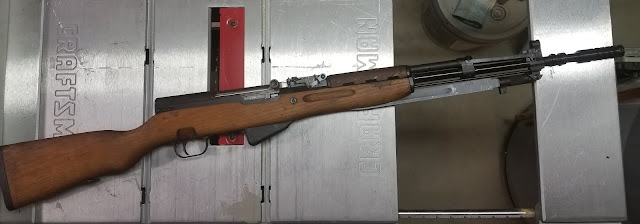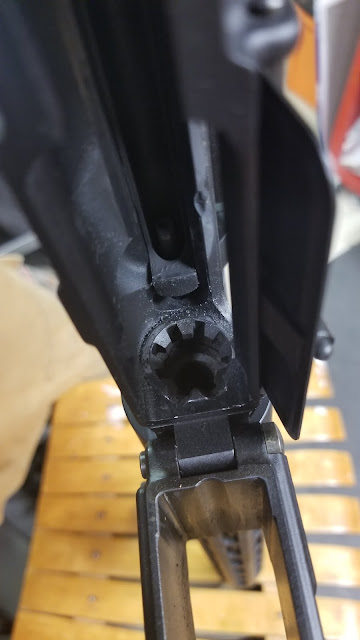The Yugo M59/66A1
Introduction
The Yugoslavian M59/66A1 is the Yugoslavian variant of the SKS that has seen a variety of notable upgrades throughout it's service life. Like all SKS's, the Yugo is chambered in 7.62x39mm, and operates from a short-stroke gas piston system with a tilting bolt lockup. It feeds from a 10 round, non-detachable magazine and can be fed with stripper clips. Like many SKS's that were adopted, the Yugo was already obsolete when it came into service in 1959. Despite the variety of upgrades done to them throughout their service life, they were still behind-the-curve in terms of firearms tech by the time they were replaced with M70's.
Technical Details
The Yugo SKS has three distinct developmental phases present in the name. First off, the M59, adopted in 1959, was a basic SKS variant. The only thing different between the M59 and a Russian SKS was the fact that the M59 lacked a chrome-lined barrel. The SKS is also widely known for having an under-folding bayonet, and the Yugo is no different, utilizing a blade-style bayonet.
Like the name would
suggest, the M59's were arsenal-upgraded in 1966 with various features that
lead to them being designated the M59/66. Of these upgrades, the most visually
obvious is the muzzle device on the end of the barrel. This is actually a rifle
grenade launcher designed to be used with NATO-spec, 22mm rifle grenades. I find this to be especially interesting, since it's a Russian-designed weapon being adapted to NATO munitions. This is an addition that would carry over to the M70 series.
Along with the grenade launcher, the M59/66 variant included a grenade launching sight/gas cutoff. This sight includes distance markings for both anti-personnel and anti-tank grenades. The lock that holds the grenade launching sight down and out of the way is also a gas cutoff. pushing in the button and rotating it will both allow the sight to be raised, and also cut off the gas to keep the weapon from cycling.
The M59/66A1 is the most minor upgrade to the rifles. The A1 upgrade added a set of flip-up, luminescent night sights. These were a three dot arrangement that would flip up in front of the normal iron sights. These were a radioactive isotope that would glow, similar to tritium in modern sights. Because of the nature of radiation, the luminescence of the sights has degraded and I personally have not heard of a Yugo SKS that still has luminescent sights.
History and Use
As mentioned above, the Yugo SKS was obsolescent when it was adopted. This led to a fairly short service life for the rifle. However, due to the variety of conflicts in the Balkans in the late 20th century, the Yugo SKS did see some action. The Yugo SKS saw limited use by rear echelon and irregular troops during the Yugoslav Wars.
Because of the limited effectiveness of the SKS on a battlefield full of modern rifles with 30-round detachable magazines, SKS's were really only used out of necessity. In short, an SKS was better than nothing at all, and at least you shared the same ammunition type as your comrades with AK variants.
 |
| Note the guard on the right with the SKS |
Conclusion
Even with its short service life, the Yugo SKS lives on in the US surplus market, where variants can be found anywhere from $300-$500. What I like most about it, compared to the numerous other SKS variants, is the grenade launching capability. Although as a civilian I will most likely never use the grenade launching feature, the overall look and the history behind it are enough for me.
If you want to check out what came next after the M59/66A1, check out my post on the M70 Series.
If you want to check out what came next after the M59/66A1, check out my post on the M70 Series.






Comments
Post a Comment